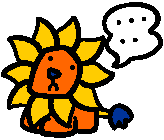
---------------------------------------------------------------------------
#50 牛は工場式畜産では育てることができないんだから、食べてもいいんですよね?
---------------------------------------------------------------------------
たしかに、今日にいたるまで、牛の畜産はまだ、他の動物が置かれて
いるほどの、極端に過酷な状況にはいたっていません;牛は依然として
草を食べる必要があるからです。しかし、昔ながらの小規模な農場が、
かすかな記憶に残るのみの存在となり、農場経営というものが、消費者
や出資者のお金を奪いあう、より大規模で複雑な産業になってくるとと
もに、工場式畜産の信奉者たちも、そのやり方を更に推し進める道を、
常に模索続けているのです。
牛の飼育においても、太らせるためにフィードロットの中で飼育した
り、餌に薬剤を混ぜたり、繁殖を管理するといった様な手法はすでに実
行されています。その他の手法も今後、導入されていくことでしょう。
とは言え、#49の中でも述べている様に、飼育の方式だけが問題と
いうわけではないのです。動物たちが屠殺場までの長い道のりを、食べ
物も水も与えられず、ぎゅうぎゅうづめで運ばれていかれるのは珍しい
ことではありません。屠殺場の中で、殺される順番を待たせること自体
も、動物たちを苦しめる残酷な行為です。そして、実際に殺す過程その
ものも、必ずしも、すっきりした苦痛のないものではありません
(#48を参照して下さい)
JK
まず、工場式畜産では牛を育てる事はできないという点について、同
意できません;それは全く、真実ではないのです。更に、もし仮にそう
だとして、それが牛を殺して食べることを正当化する理由になるという
意見にも、同意はできません。
広義での工場式畜産には、畜産業における「生産性」を向上させるた
めの、人為的な品種改良(その多くは交配を通じて行われます)も含ま
れます。こうした生産性の向上は、必然的に動物に対し、より多くの苦
しみという犠牲を強いることになるのです。この広義での工場式畜産の
対象には間違いなく、肉牛も乳牛も含まれます。
子牛肉を生産する過程は、典型的な工場式畜産の例です。デビッド・
カウレス・ハマーは次の様に書いています:
「子牛は150cm×60cm の木枠の囲いに隔離して閉じこめられる。その広
さでは体の向きを変えることさえできない。彼らは1日の大半を暗や
みの中におかれる。貧血状態のうすいピンク色をした肉(訳注 その
方が高く売れる)を保つために、寝わらも与えられず(食べてしまう
のをふせぐため)、鉄分と繊維質を除いた、液状の餌だけを食べさせ
られる。3〜5ヶ月後に、彼らは屠殺されることになる」
乳牛の畜産も工場式畜産の範ちゅうに含まれます。以下はそうしたこと
を示す、顕著な例です:
・子牛は母親から、生後1〜3日で引き離される。それは、母牛にと
っても子牛にとっても、この上なく、つらいことである;子牛の多
くは子牛肉の生産にまわされる。
・毎年、17万頭をこえる子牛が、粗末な飼育方法や、市場でのひど
い扱いのせいで死んでいっている。
・乳牛は10ヶ月にわたり、子牛が通常飲む10倍もの量の牛乳を搾
乳される。乳腺炎(乳房の炎症)もひんぱんに起きる。
・出す乳の量を増やすために、乳牛には高タンパクの餌が与えられる;
しかし、それでもタンパク質を補うのには十分ではない事も多く、
牛は体の組織をこわし、アシドーシス(酸性血症)におちいり、び
っことなる。約25%の牛が、この様にして体を痛めている。
・だいたい、5歳で牛は消耗し、使い果たされて屠殺される。本来の、
牛の寿命は20年ていどである。
最後に、たとえ牛を工場式畜産で育てることが不可能であったとして
も、牛を殺して食べる事が、道徳的に問題ないとする意見には同意でき
ません。デビッド・カウレス・ハマーは、その点を以下の様に表現して
います。
「動物が自由になるためには、その命を差し出すしかないなんて話は道
徳的に馬鹿げている」
参照:
#14、
#48、
#49

...............



-----------------------
#50 But cattle can't be factory-farmed, so I can eat them, right?
-----------------------
At this time, cattle farming has not progressed to the extremes inflicted
on some other animals--cows still have to graze. However, the proponents of
factory farming are always considering the possibilities of extending their
techniques, as the old-style small farm becomes a faded memory and farming
becomes a larger and more complex industry, competing for finance from
consumers and lenders. Cattle farming practices such as increasing cattle
densities on feedlots, diet supplementation, and controlled breeding are
already being implemented. Other developments will be introduced.
However, as discussed in question #49, it is not only the method of
farming that is of concern. Transport to the slaughterhouse, often a long
journey in crowded conditions without access to food and water, and the wait
at the slaughterhouse followed by the slaughtering process are themselves
brutal and harmful. And the actual killing process is itself not necessarily
clean or painless (see question #48).
JK
We can challenge the claim that cattle cannot be factory-farmed; it just
isn't true. We can also challenge the claim that if it were true, it would
justify killing and eating cattle.
A broad view of factory farming includes practices that force adaptations
(often through breeding) that increase the "productivity" of animal farming.
Such increases in productivity are invariably achieved at the expense of
increased suffering of the animals concerned. This broader view definitely
includes cattle, both that raised for meat and for dairy production.
Veal production is paradigmatic factory farming. David Cowles-Hamar
describes it as follows: "Veal calves are kept in isolation in 5'x2' crates
in which they are unable even to turn around. They are kept in darkness much
of the time. They are given no bedding (in case they try to eat it) and are
fed only a liquid diet devoid of iron and fiber to keep their flesh anemic
and pale. After 3-5 months they are slaughtered."
Dairy farming also qualifies as factory-farming. Here are some salient
facts:
* Calves are taken away at 1-3 days causing terrible distress to both
the cows and the calves; many calves go for veal production.
* Over 170,000 calves die each year due to poor husbandry and appalling
treatment at markets.
* Cows are milked for 10 months and produce 10 times the milk a calf
would take naturally. Mastitis (udder inflammation) frequently results.
* Cows are fed a high-protein diet to increase yield; often even this is
not enough and the cow is forced to break down body tissues, leading
to acidosis and consequent lameness. About 25 percent of cows are
afflicted.
* At about 5 years of age, the cow is spent and exhausted and is
slaughtered. The normal life span is about 20 years.
Finally, we cannot accept that even if it were not possible to factory-farm
cattle, that therefore it is morally acceptable to kill and eat them. David
Cowles-Hamar puts it this way: "The suggestion that animals should pay for
their freedom with their lives is moral nonsense."
DG
SEE ALSO: #14, #48-#49




